Introduction:Induction cooking is more energy-efficient than gas.
I’ve noticed that induction cooking offers remarkable energy savings compared to traditional gas cooking. Induction cooktops use electromagnetic energy to directly heat the cookware, which leads to faster cooking times and less heat loss. In contrast, gas cooking relies on open flames, which often result in energy being wasted around the sides of the pan.
Induction cooking is more energy-efficient than gas because it directly heats the cookware, reducing heat loss. With induction, almost 90% of the energy is transferred to the pan, whereas gas only transfers about 40% of the energy. This efficiency results in quicker cooking times, less wasted energy, and more precise temperature control, making induction a more sustainable option in the long run.
Looking at both cooking methods, it’s clear to me that induction cooking offers better energy efficiency, speed, and control. Whether you’re cooking everyday meals or preparing gourmet dishes, induction is a great choice for anyone seeking efficiency and performance.
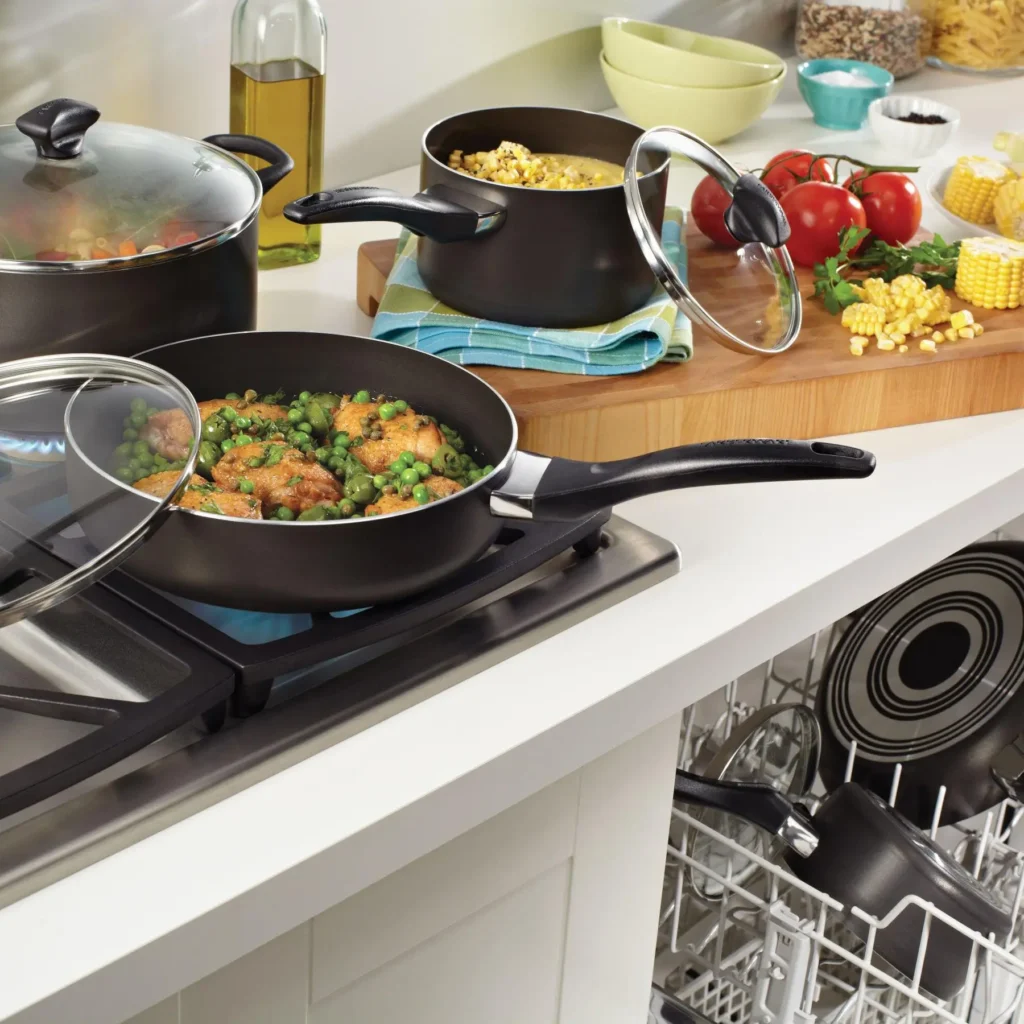
Understanding Induction Cooking
Induction cooking is gaining popularity due to its efficiency and modern technology.
- How It Works: Induction cooking uses electromagnetic energy to heat cookware directly. The electromagnetic field generates heat within the cookware itself, meaning the cooktop surface remains relatively cool while the cookware heats up.
- Energy Efficiency: Induction cooktops are highly energy-efficient, with an estimated energy transfer efficiency of around 85-90%. This is because the heat is generated directly in the cookware, minimizing energy loss to the surrounding environment.
- Speed: Induction cooktops are known for their rapid heating. Because the energy is transferred directly to the cookware, the cooking process begins almost immediately, reducing overall cooking time and energy consumption.
- Safety: One of the major safety advantages of induction cooking is that the cooktop remains cool to the touch, which reduces the risk of burns. Additionally, induction cooktops typically feature automatic shut-off when cookware is removed, further enhancing safety.
Understanding Gas Cooking
Gas cooktops have been a staple in kitchens for decades, favored for their responsiveness and control.
- How It Works: Gas cooktops use an open flame to heat cookware. Heat is transferred from the flame to the cookware, which then cooks the food. The visual flame provides a clear indication of the heat level, allowing for immediate adjustments.
- Energy Efficiency: Gas cooktops are generally less energy-efficient compared to induction, with an estimated energy transfer efficiency of only about 35-40%. A significant amount of heat is lost to the surrounding air, making gas cooking less efficient in terms of energy use.
- Control: Despite their lower energy efficiency, gas cooktops are often preferred by professional chefs and home cooks for their precise temperature control. The ability to adjust the flame instantly provides a level of responsiveness that is particularly useful for certain cooking techniques.
- Cost: Gas cooktops are often cheaper upfront, and natural gas can be less expensive than electricity in some regions. However, the lower energy efficiency can lead to higher overall energy costs in the long run.
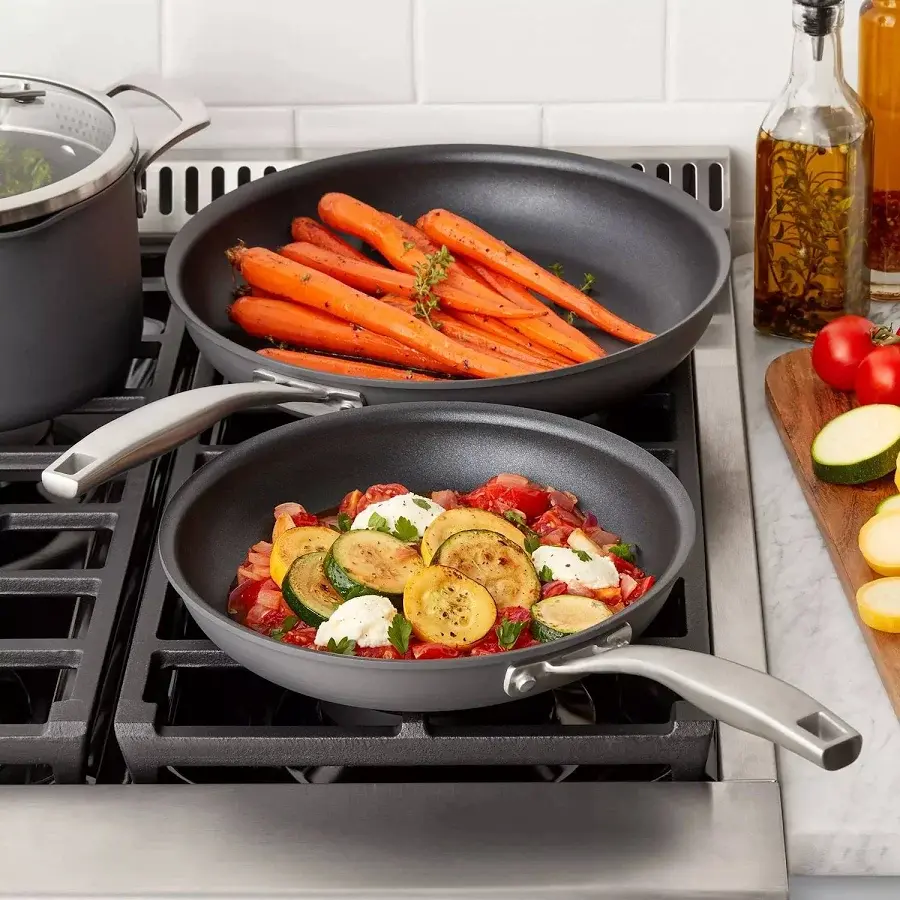
Energy Efficiency Comparison
- Heat Transfer Efficiency: Induction cooktops transfer approximately 85-90% of the energy to the cookware, making them highly efficient. In contrast, gas cooktops transfer only about 35-40% of the energy, with much of the heat lost to the surrounding air.
- Cooking Speed: Induction cooktops heat up faster because the energy is directly transferred to the cookware, reducing cooking times and energy usage. Gas cooktops, while providing excellent control, may take longer to reach and maintain desired temperatures.
- Environmental Impact: Induction cooktops, due to their higher efficiency, tend to have a lower environmental impact, particularly when powered by renewable energy sources. Gas cooking, on the other hand, releases carbon dioxide and other greenhouse gases, contributing to environmental pollution.
Advantages of Tri-Ply Cookware for Both Induction and Gas
Tri-ply cookware is an excellent choice for both induction and gas cooking due to its unique construction, which combines different materials for optimal performance.
- Multi-Layer Composition: Tri-ply cookware is constructed with three bonded layers: an inner layer of stainless steel, a core layer of aluminum, and an outer layer of stainless steel. The aluminum core ensures excellent heat conductivity, while the stainless steel layers provide durability and compatibility with various cooktops, including induction.
- Even Heat Distribution: The aluminum core allows for even heat distribution across the cookware surface, reducing hot spots and ensuring consistent cooking on both induction and gas cooktops. This even distribution minimizes the need for high heat settings, improving energy efficiency.
- Durability: The stainless steel layers add strength and durability, making tri-ply cookware resistant to warping under high heat from a gas burner or rapid temperature changes typical in induction cooking. This makes tri-ply cookware a long-lasting investment.
- Energy Efficiency: On induction cooktops, tri-ply cookware heats up quickly and retains heat effectively, reducing the amount of energy required for cooking. On gas cooktops, the even heat distribution provided by the aluminum core ensures that less energy is wasted, making cooking more efficient.
Tri-Ply Circle Material Introduction
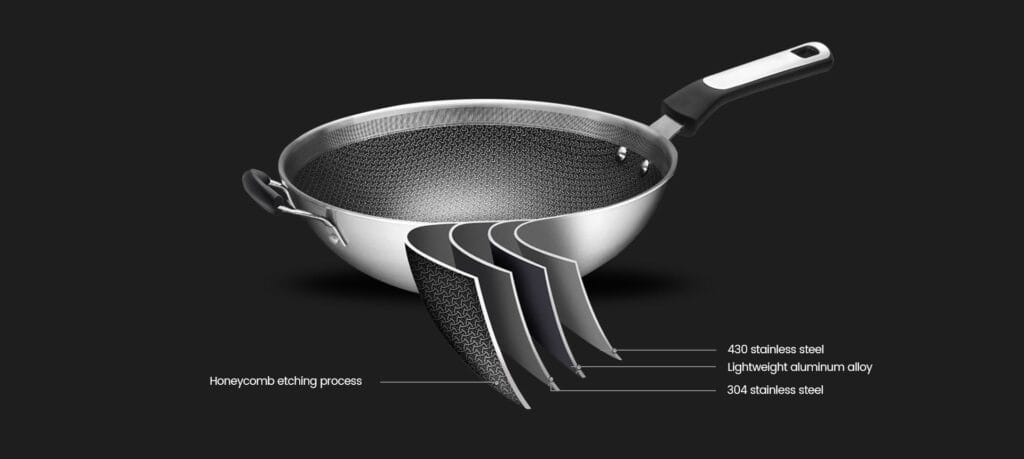
Tri-ply circle material is specifically designed for high-quality cookware that demands even heat distribution, durability, and efficiency.
- Material Composition: Tri-ply circle material consists of three layers bonded together—an aluminum core sandwiched between two layers of stainless steel. This combination takes advantage of the heat conductivity of aluminum and the non-reactive, durable properties of stainless steel.
- Manufacturing Process: The tri-ply circle material is manufactured through a high-pressure and high-temperature bonding process, which ensures a strong, uniform bond between the layers. This process results in a high-quality material that enhances the performance of cookware.
- Applications: Tri-ply circle material is used in a variety of cookware, including frying pans, skillets, saucepans, and stockpots. Its ability to distribute heat evenly and resist warping makes it ideal for use on both induction and gas cooktops.
6. Advantages of Tri-Ply Cookware on Induction and Gas Cooktops
Tri-ply cookware is versatile and well-suited for use on both induction and gas cooktops, providing a range of advantages that enhance cooking efficiency and performance.
- Versatility: Tri-ply cookware works equally well on both induction and gas cooktops, making it a versatile choice for any kitchen. Its magnetic stainless steel exterior ensures compatibility with induction cooktops, while the durable construction handles the high heat of gas burners.
- Quick Response: On induction cooktops, tri-ply cookware heats up almost instantly, providing rapid temperature response. On gas cooktops, the aluminum core ensures efficient and even heat transfer, making it suitable for a wide variety of cooking techniques.
- Retention and Efficiency: The stainless steel layers help retain heat, making tri-ply cookware energy-efficient by maintaining even cooking temperatures for longer periods. This reduces the need to adjust the heat frequently, saving energy on both cooktop types.
Conclusion
Induction cooking is generally more energy-efficient compared to gas cooking due to its direct heat transfer and minimal energy loss. However, gas cooking offers precise temperature control, which is favored by many professional chefs. Tri-ply cookware stands out as an excellent option for both types of cooktops, offering even heat distribution, durability, and versatility. Whether you use induction or gas, tri-ply cookware helps you achieve optimal cooking results with energy efficiency and superior performance. The unique combination of aluminum and stainless steel in tri-ply cookware ensures that it meets the demands of modern cooking while maximizing energy efficiency.
Frequently Asked Questions (FAQs)
- Is induction cooking more energy-efficient than gas cooking?
- Yes, induction cooking transfers heat directly to the cookware, making it more energy-efficient than gas cooking, which loses much heat to the environment.
- Can I use tri-ply cookware on both induction and gas cooktops?
- Yes, tri-ply cookware is compatible with both induction and gas cooktops due to its multi-layer construction.
- What makes tri-ply cookware ideal for induction cooking?
- The magnetic stainless steel exterior of tri-ply cookware makes it compatible with induction cooktops, while the aluminum core ensures even heat distribution.
- Why do chefs prefer gas cooking despite its lower energy efficiency?
- Many chefs prefer gas cooking because it offers precise temperature control, which is essential for certain cooking techniques.
- How does tri-ply cookware compare to regular stainless steel cookware on gas cooktops?
- Tri-ply cookware has an aluminum core that improves heat conductivity, providing better and more even heat distribution compared to regular stainless steel cookware.
- Does induction cooking reduce cooking times compared to gas?
- Yes, induction cooktops heat up faster and reduce cooking times compared to gas cooktops, which helps save energy.
- Is tri-ply cookware energy-efficient on gas cooktops?
- Yes, tri-ply cookware is energy-efficient on gas cooktops due to its even heat distribution, which reduces cooking time and energy consumption.
- What are the safety advantages of induction cooking over gas?
- Induction cooktops remain cool to the touch, reducing the risk of burns, whereas gas cooktops have open flames that pose a greater risk of fire and burns.
- How is tri-ply circle material manufactured?
- Tri-ply circle material is manufactured by bonding three layers—stainless steel, aluminum, and stainless steel—under high pressure and temperature to create a durable, uniform cookware material.
- Can tri-ply cookware warp on induction or gas cooktops?
- Tri-ply cookware is highly resistant to warping due to its multi-layer construction, making it suitable for both induction and gas cooking, which involve rapid heat changes.

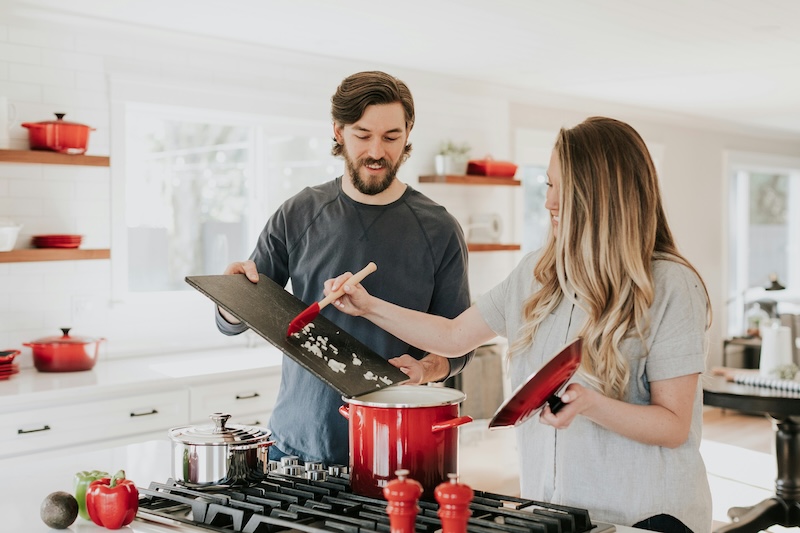

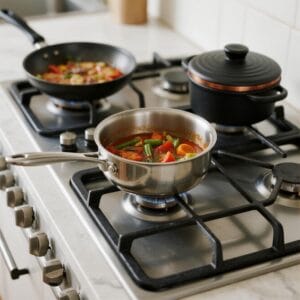
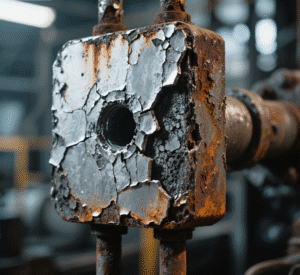


2 Responses